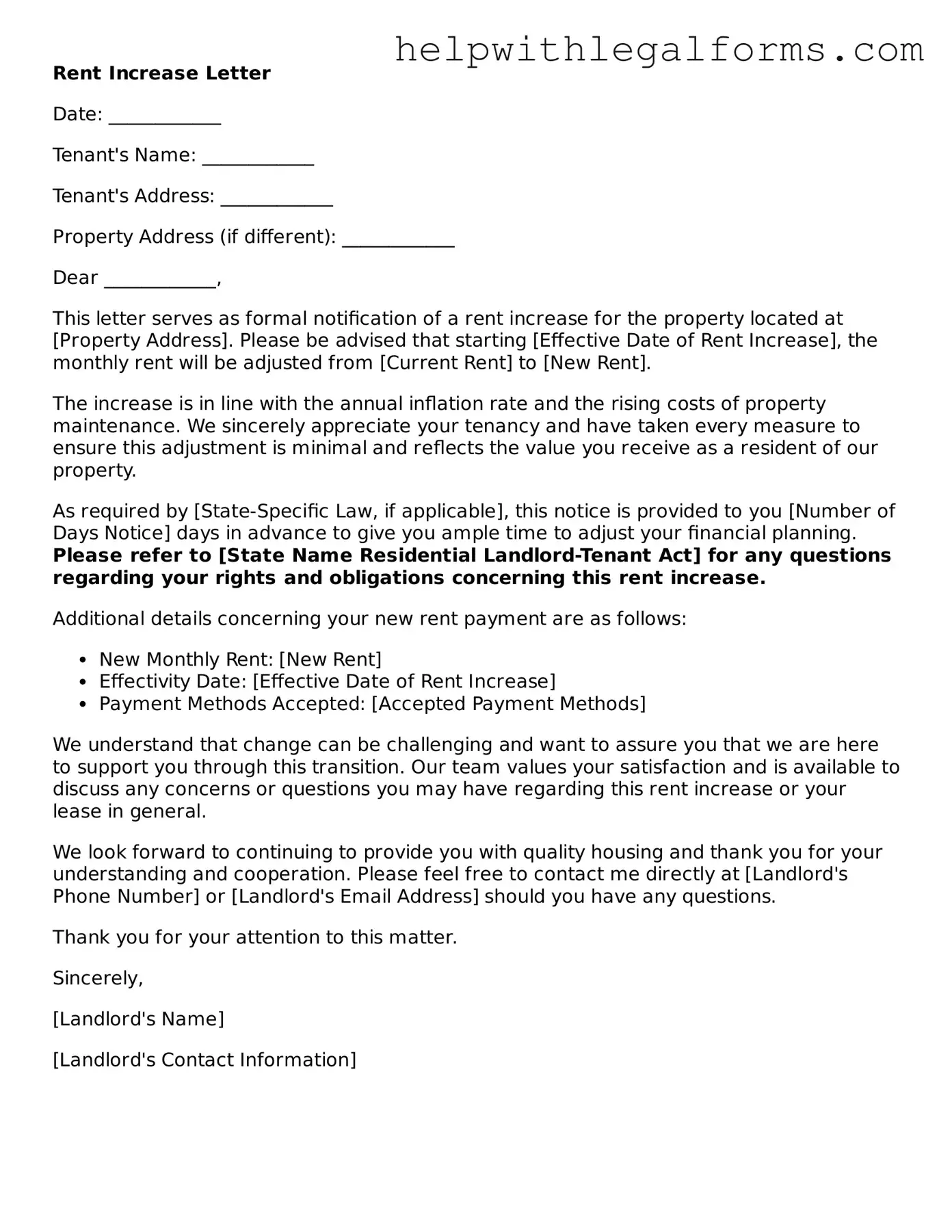Rent Increase Letter
Date: ____________
Tenant's Name: ____________
Tenant's Address: ____________
Property Address (if different): ____________
Dear ____________,
This letter serves as formal notification of a rent increase for the property located at [Property Address]. Please be advised that starting [Effective Date of Rent Increase], the monthly rent will be adjusted from [Current Rent] to [New Rent].
The increase is in line with the annual inflation rate and the rising costs of property maintenance. We sincerely appreciate your tenancy and have taken every measure to ensure this adjustment is minimal and reflects the value you receive as a resident of our property.
As required by [State-Specific Law, if applicable], this notice is provided to you [Number of Days Notice] days in advance to give you ample time to adjust your financial planning. Please refer to [State Name Residential Landlord-Tenant Act] for any questions regarding your rights and obligations concerning this rent increase.
Additional details concerning your new rent payment are as follows:
- New Monthly Rent: [New Rent]
- Effectivity Date: [Effective Date of Rent Increase]
- Payment Methods Accepted: [Accepted Payment Methods]
We understand that change can be challenging and want to assure you that we are here to support you through this transition. Our team values your satisfaction and is available to discuss any concerns or questions you may have regarding this rent increase or your lease in general.
We look forward to continuing to provide you with quality housing and thank you for your understanding and cooperation. Please feel free to contact me directly at [Landlord's Phone Number] or [Landlord's Email Address] should you have any questions.
Thank you for your attention to this matter.
Sincerely,
[Landlord's Name]
[Landlord's Contact Information]
